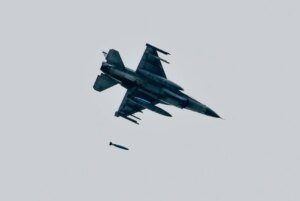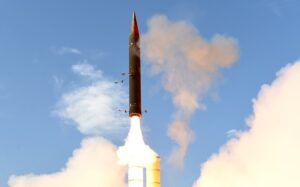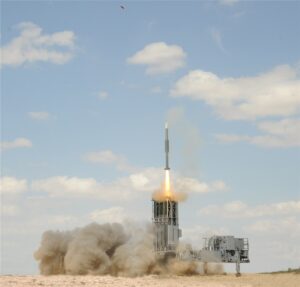意大利海军接收第十艘FREMM级护卫舰,增强反潜实力
快速阅读: 2024年7月31日,意大利海军接收第二艘反潜增强型FREMM护卫舰“埃米利奥·比安奇”号,以替代2020年售往埃及的通用型FREMM。该舰配备先进反潜系统和网络安全措施,标志着意大利海军FREMM基线生产阶段结束,未来将发展FREMM EVO版本。
The frigate was constructed by Orizzonte Sistemi Navali, a joint venture between Fincantieri (51%) and Leonardo (49%), which served as the prime contractor and design authority. Emilio Bianchi is the second of two FREMM frigates built in the Anti-Submarine Warfare Enhanced (ASW-E) configuration, following the delivery of Spartaco Schergat (F 598) in April 2025. These two units were commissioned to replace the General Purpose FREMMs initially destined for Italy but sold to Egypt in 2020. The commissioning of Emilio Bianchi also confirms the closure of the baseline Bergamini-class FREMM production phase for the Italian Navy, ahead of the FREMM EVO development. The ASW-Enhanced configuration merges the structural platform and general-purpose features of the earlier GP variants with the anti-submarine warfare suite and structural modifications from the ASW variants.
Externally, the most visible alteration compared to earlier GP ships is the removal of the stern 11-meter RHIB launch and recovery station, which was replaced with a Thales CAPTAS-4 low-frequency variable-depth sonar. Additional changes include adjustments to the secondary mast to accommodate a new communications electronic support measure (CESM) antenna and other minor modifications to the superstructure to support new electronic warfare and sensor systems. Internally, these ships introduce several upgrades not present in previous ships of the class, including a new active cyber protection system for the Ship Management System (SMS), developed by Fincantieri NexTech. This cybersecurity solution enables crew members to detect anomalies autonomously and manage incidents without immediate reliance on the Navy’s cyber command. This capability will be retrofitted onto earlier FREMMs and further enhanced on the future FREMM EVO variants.
The Italian Navy’s FREMM program began with a 2005 agreement between Italy and France. Italy eventually ordered ten ships, composed of four General Purpose (GP), four Anti-Submarine Warfare (ASW), and two ASW-Enhanced (ASW-E) units. The GP ships include Carlo Bergamini, Luigi Rizzo, Federico Martinengo, and Antonio Marceglia, while the ASW variants are Virginio Fasan, Carlo Margottini, Carabiniere, and Alpino. The ASW-E configuration, comprising Spartaco Schergat and Emilio Bianchi, was developed specifically to replace the GP units transferred to Egypt in a €1.2 billion deal. OCCAR continues to manage in-service support (ISS) for all Italian FREMMs, and a new Through Life Sustainment Management (TLSM) contract is expected to be signed with Orizzonte Sistemi Navali in the second half of 2025. The first eight FREMMs accumulated over 315,000 hours at sea during their first eight years in service, a figure comparable to the total operating hours of all eight Maestrale-class frigates that preceded them. Following its delivery, Emilio Bianchi will first undergo elementary training and qualification at MARICENTADD in Taranto before its expected assignment to the 2nd Naval Division, also based in Taranto.
The, Emilio Bianchi measures 144 meters in length and 19.7 meters in beam and has a full-load displacement of approximately 6,700 tonnes. The propulsion system is a Combined Diesel-Electric and Gas (CODLAG) configuration consisting of a 32 MW General Electric/Avio Aero LM2500+G4 gas turbine, two 2.15 MW Jeumont Electric permanent magnet motors, and four 2.1 MW Isotta Fraschini VL1716C2ME diesel generators. A Renk cross-connected gearbox allows the ship to operate at low-emission speeds up to 15.6 knots using electric propulsion alone, while combined propulsion allows for speeds exceeding 27 knots. Additionally, a 1 MW retractable azimuthal thruster permits maneuvering at up to 7 knots independently of the main propulsion system. The vessel incorporates platform upgrades introduced on later FREMM units, such as Martec’s TRDE electronic damage control system and LED lighting. The double hangar supports two NH90 helicopters or one NH90 and one EH101, and the ship has been prepared for unmanned aerial systems, including the Boeing Insitu ScanEagle and Leonardo AWHero, the latter of which was tested under the EU-funded OCEAN 2020 project.
The combat system is based on Leonardo’s SAAM-ESD integrated command and control architecture, which supports area air defense using MBDA’s Aster 15 and 30 missiles launched from two 8-cell Sylver A50 vertical launch systems. The radar suite includes Leonardo’s Kronos Grand Naval multifunction AESA radar, two NA-25X fire control directors with RTN-25X radar and EO/IR sensors, and the SPS-732 2D surface and air surveillance radar. The ship also integrates the SIR-M-CA IFF interrogator and the SASS IRST upgraded using developments from the PPA program. The Thales UMS 4110 CL hull-mounted sonar and the UMS 4249 CAPTAS-4 towed sonar, paired with ELAC’s SeaBeam 3050 multibeam echo sounder, support the ASW role. Decoy and acoustic countermeasure systems include the Leonardo ODLS 20, two WASS B530 launchers for anti-torpedo decoys, and two SITEP SX-424 non-lethal acoustic systems. The new Integrated Electronic Warfare Suite (IEWS) by Elettronica incorporates passive RESM and CESM sensors and active RECM modules based on GaN technology, housed in modified locations including the main mast and the aft hangar structure.
The main gun is the 127/64 mm LW Vulcano by Leonardo, capable of firing extended-range precision-guided munitions and supported by an automated ammunition handling system. Secondary armament includes a 76/62 mm Super Rapido Strales gun with DART guided ammunition, two 25 mm Oerlikon KBA manually operated guns, four twin launchers for eight MBDA Teseo Mk2/A anti-ship/land attack missiles (with readiness for future Mk2/E), and two triple WASS B515 torpedo launchers for MU90 lightweight torpedoes. All FREMM frigates are built with four vertical zones that ensure command and control redundancy, enabling the ship to remain operational even if part of the platform is damaged. The ship management, navigation, and communications suites were upgraded to match systems in service on Italy’s newest naval platforms. Communications improvements include software-defined radios, SATCOM enhancements, and a multi-data link processor supporting Link 16 and Link 22 protocols.
The FREMM program remains active internationally, with France having received eight ships (six ASW and two AAW variants), Morocco operating one, Egypt three (including two Italian-built), and Indonesia having ordered six. The United States Navy selected a FREMM-based design for its Constellation-class FFG program, with up to 20 units planned. On 31 July 2024, Italy placed a €1.5 billion order with OCCAR for two FREMM EVO ships, bringing the Italian fleet to twelve. The FREMM EVO will retain the ASW hull but introduce new features including dual-band X- and C-band AESA radar from the PPA program, Aster 30 B1NT integration, CAPTAS-4 VDS, a new 30 mm remote-controlled cannon system, and open architecture for unmanned systems. They will be delivered in 2029 and 2030, following the first steel cut held on 3 April 2025. Unlike earlier FREMMs, the FREMM EVO will reserve space for Sylver A70 launchers to potentially accommodate land-attack missiles. On the ASW-E frigates, this space has been reassigned for additional accommodation rather than vertical launch cells.
The delivery of Emilio Bianchi concludes the initial phase of Italy’s FREMM program and coincides with the broader naval modernization strategy defined in the 2023–2025 Italian Defence Planning Document. This includes the development of new DDX destroyers to replace the Horizon-class, continued construction of the Thaon di Revel-class offshore patrol vessels in Full configuration, participation in the European Patrol Corvette initiative, and the U212 NFS submarine program which aims to replace the existing Sauro-class. The Navy is also investing in mine countermeasure vessels, logistics ships, amphibious capabilities, cyber resilience, unmanned systems, and multi-domain integration of manned and unmanned aerial vehicles. With these projects in parallel, the FREMM program, including its evolution into the FREMM EVO, remains one of the most significant European frigate efforts of the twenty-first century in terms of operational reach, industrial scope, and strategic impact.
(以上内容均由Ai生成)








